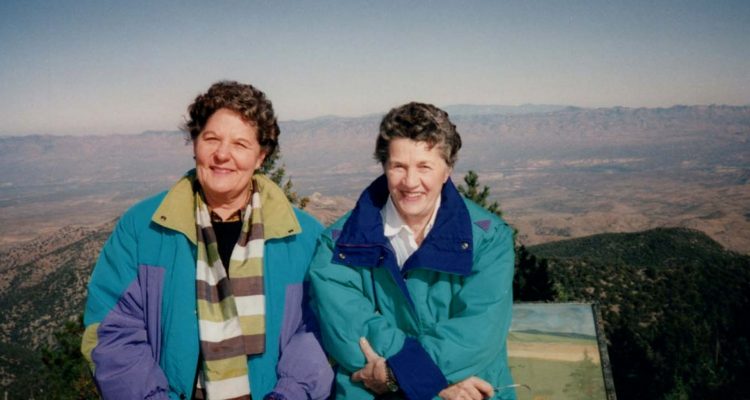Tracking the decades-spanning love of Terry Donahue and Pat Henschel, two female baseball players who helped inspire Penny Marshall’s 1992 film “A League of the Own,” Chris Bolan’s documentary “A Secret Love” is an affecting look at one couples life in the backdrop of consistently shifting social and political viewpoints in relation to LGBTQ relationships. Toggling between archival footage, talking heads, and Donahue and Henschel’s present-day plight, in which they decide to move away from their home in Chicago because of lingering health issues, Bolan’s film (Donahue and Henschel are his great aunts) is a moving portrait of the resiliency of love in the face of social upheavals, grounding a sweeping historical overview in the lives of Donahue and Henschel.
Beginning in the seemingly present day, in which Donahue has been contending with tremors in her right arm, the couple reluctantly decides to move to Alberta, to be closer to their family, and possibly look into retirement homes that are more equipped to take care of them. The film initially looks to be a portrait of aging, in which Henschel has to contend with Donahue’s family, all of which tolerate Pat, but are seemingly distant from her. Yet that distance relates back to lingering family traumas, in which Donahue and Henschel were forced, by social norms, to live closeted lives, telling everyone they were roommates for most of their lives. It’s only after seven decades that they eventually choose to come out to their families.
After setting up his titular couple, Bolan’s film moves in a number of different directions, focalizing Donahue and Henschel as they decide whether to finally get married, discuss their living arrangements and the possibility of living in a nursing home in which they would be the only gay couple. But, just as important to “A Secret Love” are the underlying systems which forced Donahue and Henschel to live closeted lives, and the ways in which they quietly defied the heteronormativity that they were being placed into, mainly through their short-lived careers as baseball players in the All-American Girls Professional Baseball League. It was during that time that they met, bonding over their competitive natures and shared interests, before falling in love. While some of the film is dedicated to the AAGPBL, and the ways in “A League of Their Own” both paid tribute to the players and sanitized their experience, this documentary is by no means centered on it. Instead, “A Secret Love”, if anything, uses Marshall’s film as a window into the underground gay culture of the 50s and 60s.
These discussions, in which academics and social writers contextualize LGBTQ culture post World War II are, frankly, the least affecting, if only because they are seemingly out of a different film, one that provides sweeping historical overviews instead of embodying these traumatic experiences within his two strong, frank, loveable leads. There’s nothing bad with context, but sometimes “A Secret Love” retreats into a talking head history lesson.
When Donahue and Henschel are on-screen, “A Secret Love” is profound, quietly lingering in their day-to-day lives; content to watch Donahue’s physical therapy appointment develop in real-time, if only because to show her resiliency and Henschel’s quiet worrying in the background. Further, in framing the film around two major decisions for the couple, whether to marry and move, “A Secret Love” highlights the tensions that couples still face, even decades into a relationship. Donahue wants to move, Henschel doesn’t. Yet both often return to the same idea, that it doesn’t matter if they marry or if they live in Chicago or what Henschel calls “the Frozen North,” as long as they are together. Throughout the periods in which they lived, in which they contended with homophobic family members, laws, and social pressures, they always remained together, even if they had to lie about their relationship.
While “A Secret Love” may be too routine in its historical treatment of LGBTQ rights, relying on tried and true documentary methods to convey context, Bolan’s film is striking mainly because he chose such amazing protagonists, choosing to ground the story in a relationship that has, perhaps, contended with every imaginable hardship and still has come out the other side. Pat and Terry may stand in for any number of gay couples that had to deal with discrimination, forced into the closet because of who they loved, but they are also distinctly their own people: somewhat curmudgeonly, a little loving, and very resilient, this film is all the better for focalizing their personal relationship. [A-]

